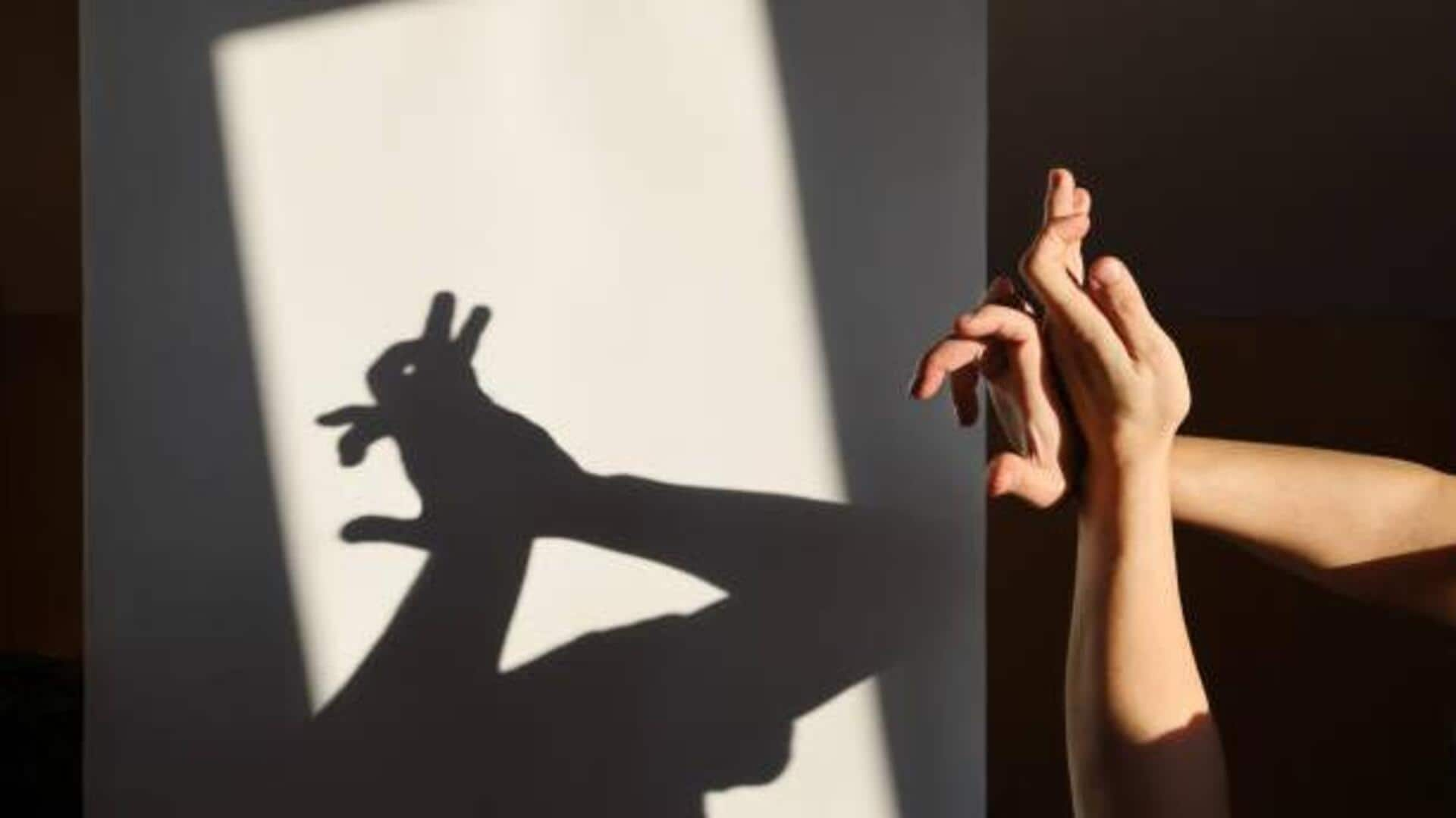
Shadow play: A creative way to improve your imagination
What's the story
Shadow play has always been one of the most ancient forms of storytelling and entertainment. But did you know it can also help you stimulate your creativity/imagination? By simply using light and shadow, you can tell the most captivating stories and create the most interesting scenes that can engage your mind like never before. Here are five ways to bring out your imagination through shadow play.
Tip 1
Experiment with different light sources
Using different light sources can dramatically change the shadows produced during a performance. Playing with flashlights, lamps, or even natural sunlight can produce some interesting effects and moods. Every light source has its own intensity and angles, which can result in new creative possibilities. By swapping the light source, performers can uncover unexpected shapes and forms that spark new storylines.
Tip 2
Incorporate everyday objects
Everyday objects around the house can be turned into mesmerizing shadow puppets. Kitchen utensils, plants, or anything else can be used creatively to generate unique silhouettes on a screen or wall. This encourages out-of-the-box thinking as performers find new uses for common things. The selection process also sparks problem-solving skills as one thinks about how each item would contribute to a narrative.
Tip 3
Create complex storylines
Developing intricate storylines adds depth to shadow play performances. Instead of simple scenes, consider weaving together multiple characters and plots that challenge both the performer's imagination and the audience's perception. Crafting complex narratives requires detailed planning but results in more engaging performances that captivate viewers' attention.
Tip 4
Use colorful backdrops
Introducing colorful backdrops behind the shadows adds another layer of creativity to shadow play. Colored paper or fabric can transform how shadows appear by changing their hue or intensity when combined with different lighting techniques. This technique allows performers to experiment with visual contrasts between shadows and backgrounds, enhancing storytelling through visual dynamics.
Tip 5
Collaborate with others
Collaborating with others opens up new avenues for creativity in shadow play by combining diverse ideas into one cohesive performance piece. Working together encourages brainstorming sessions where participants share perspectives on character development or scene creation techniques they might not have considered alone before now! Collaborative efforts often lead not only towards richer narratives but also foster teamwork skills among participants involved throughout this artistic endeavor.